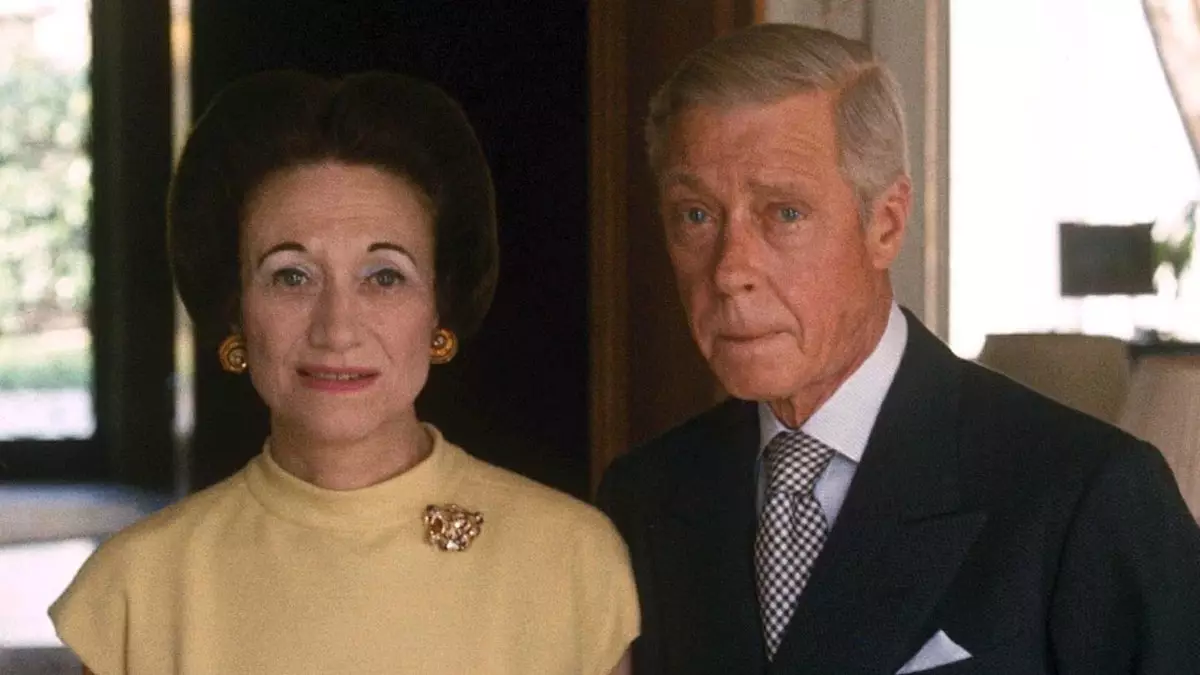The Met Gala, an event now recognized as the pinnacle of glitz and fashion, has transformed dramatically from its inception to the current day. Once an exclusive gathering for the crème de la crème of society, its origins were deeply rooted in a refined soiree vibe that celebrated high fashion and high culture within the hallowed halls of the Metropolitan Museum of Art. The transition from sophisticated dinner party to spectacle—a cinematic pageant often ripe for ironic critique—can largely be attributed to the strong personalities who paved the way. Among them, the unforgettable appearance of Wallis Simpson, the Duchess of Windsor, in 1974 serves as a remarkable chapter in this evolution.
Wallis Simpson: A Timeless Icon of Scandal and Style
On April 23, 1974, the Met Gala was graced by the presence of Wallis Simpson, a cultural figure whose history was interwoven with tales of love, royalty, and rebellion. At 78 years old, she embodied an evergreen elegance, appearing at an event dedicated to the theme “Romantic and Glamorous Hollywood Design.” The theme was not just a nod to the bygone era of cinematic opulence but served as a canvas on which Diana Vreeland, the curator, painted visions of haute couture that resonated with nostalgia and magnificence.
Vreeland’s curation was revolutionary; it wasn’t merely about collecting apparel but about transporting attendees to a fantasy realm where fashion’s potency could reshape narratives. Simpson, with her poised demeanor, seemed almost like a vestige of this romantic world, walking into the museum as an inseparable part of fashion and history, a walking exhibit of human desire and societal upheaval.
The Glamour of Wallis Simpson’s Attire
Simpson’s choice of attire—a breathtaking electric blue satin gown—was a perfect illustration of her understanding of silhouette and color. The floor-length creation featured sophisticated elements like a delicate bow and a line of covered buttons, exuding luxury without being ostentatious. Speculation swirled around the gown’s designer, with many attributing it to Hubert de Givenchy, a longtime confidant and creator of many of her iconic ensembles. This association not only highlights Simpson’s exquisite taste but also imprints Givenchy’s craftsmanship alongside her enduring legacy.
The flawless execution of her look was completed with immaculate accessories—a sapphire and diamond brooch, statement earrings, and a sparkling bracelet that emerged from beneath her crisp white opera gloves. Each component was carefully curated, embodying the very essence of refined glamour. With her expertly styled hair and precisely applied makeup, including subtle shades of blue and coral, Wallis Simpson was a masterclass in elegance, an embodiment of old-world sophistication amidst a crowd that often veered toward the avant-garde.
Living Drama and Societal Reflections
The 1974 Met Gala stood in stark contrast to today’s often chaotic merge of celebrity and high fashion; it clung to the roots of its aristocratic past. There were no cellphones capturing endless selfies nor were there the daringly bold ensembles now characteristic of the event. For Simpson, whose mere presence signified a dramatic collision of love and monarchy, her participation was a reflection of a narrative beyond the evening’s festivities.
Her audience included notable figures like Elizabeth Taylor and Liza Minnelli, yet Wallis didn’t need to compete for attention through theatrics; her life story—the love affair that shook the British monarchy and her subsequent exile—was a narrative steeped in its own brand of spectacle. Wallis chose to reveal her inner strength through subtlety rather than on-stage theatrics, allowing her history to radiate more powerfully than the fashion statements of her contemporaries.
A Moment Stamped in History
Wallis Simpson’s poised attendance at the Met Gala is more than a mere fashion moment; it is a symbol of an era that is slowly fading from memory. She showcased timeless elegance that resonated with those fortunate enough to witness it while simultaneously serving as a reminder that true style transcends trends and years—a notion particularly relevant in our current fast-paced, image-driven culture.
The essence of her participation lay in the non-verbal narratives of acceptance, elegance, and personal history that she carried with her into the event. The juxtaposition of her classic style with the increasingly sensational tendencies of modern-day gala-goers serves as an evocative commentary on the nature of celebrity, fashion, and history. Wallis Simpson entered the Met Gala, not just adorned in her electric blue satin gown, but draped in a legacy that reminds us of the power of narrative woven through time, elegance, and the quiet strength of a woman who dared to love and live on her own terms.

